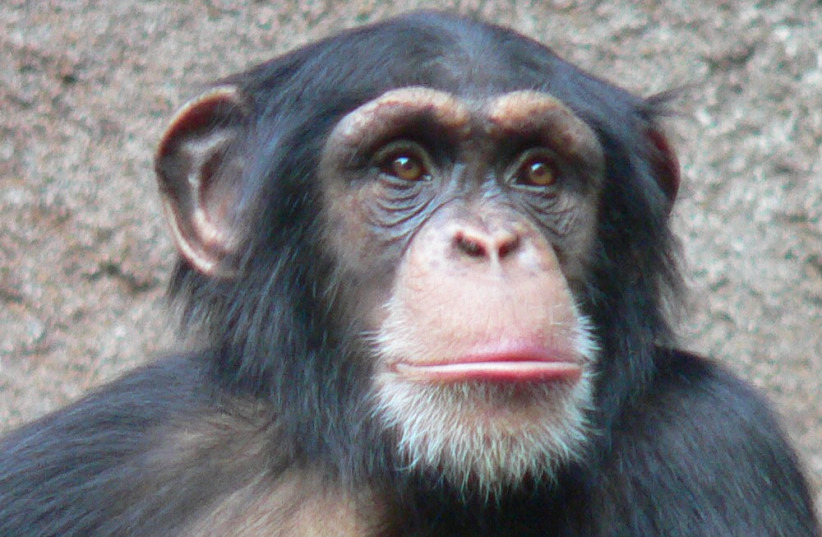Stem cell researchers from Lund University in Sweden found that “non-coded DNA” shows differences in the brains of humans and nonhuman primates. Uncoded DNA was previously believed to have no practical function – even deemed “junk DNA” in scientific circles – making discoveries of particular interest to researchers.
The findings open up the realm of possibilities for what makes humans different from other species, a subject with a particular curiosity for study author Johann Jacobsen, professor of neuroscience at Lund University.
cnxps.cmd.push(function() { cnxps({playerId: ’36af7c51-0caf-4741-9824-2c941fc6c17b’}).render(‘4c4d856e0e6f4e3d808bbc1715e132f6’); });
if(window.location.pathname.indexOf(“/jpost-tech/”)!=-1){ document.getElementsByClassName(“divConnatix”)[0].style.display = “None”; var script = document.createElement(‘script’); script.src=”https://static.vidazoo.com/basev/vwpt.js”; script.setAttribute(‘data-widget-id’,’616dd69d1b04080004ac2cc0′); document.getElementsByClassName(‘divVidazoo’)[0].appendChild(script); }else if(window.location.pathname.indexOf(“/israel-news/”) != -1 || window.location.pathname.indexOf(“/omg/”) != -1 || window.location. pathname.indexOf(“/food-recipes/”) != -1 || window.location.pathname.indexOf(“/science/”) != -1){ document.getElementsByClassName(“divConnatix”)[0].style.display = “None”; var script = document.createElement(‘script’); script.src=”https://static.vidazoo.com/basev/vwpt.js”; script.setAttribute(‘data-widget-id’, ’60fd6becf6393400049e6535′); document.getElementsByClassName(‘divVidazoo’)[0].appendChild(script); }else if(window.location.pathname.indexOf(“/health-and-wellness/”) != -1){ document.getElementsByClassName(“divConnatix”)[0].style.display = “None”; var script = document.createElement(‘script’); script.src=”https://player.anyclip.com/anyclip-widget/lre-widget/prod/v1/src/lre.js”; script.setAttribute(‘pubname’, ‘jpostcom’); script.setAttribute(‘widgetName’, ‘0011r00001lcD1i_12246’); document.getElementsByClassName(‘divAnyClip’)[0].appendChild(script);}
“I believe that the brain is the key to understanding what it is that makes man human. How did it happen that humans could use their minds in such a way that they could build societies, their Educate kids and develop advanced technology? It’s fascinating,” Jacobson said.
Researchers grew brain cells from humans and chimpanzees using stem cells and compared the two types of cells, finding that humans and chimpanzees use the non-coded part of their DNA in different ways, Which play a significant role in the development of the human brain.
 A chimpanzee (credit: via Wikimedia Commons)
A chimpanzee (credit: via Wikimedia Commons)
The part of our DNA that was identified differently, Jacobson declared, was unexpected. It was a so-called structural form of DNA formerly referred to as “junk DNA”, a long repetitive DNA string that has been stored for a long time with no function. Not considered.”
So-called “junk DNA” comprises more than 98% of the DNA material in human and primate brains.
“Previously, researchers have looked for answers in the part of DNA where the protein-producing genes are — which makes up only 2% of our entire DNA — and examined the proteins themselves to find examples of differences,” Jacobson explained. . Our results suggest that what has been important for brain development is probably hidden in an unseen 98%[of DNA matter].”
This novel stem cell research technique was recognized with the 2012 Nobel Prize in Physiology or Medicine. According to the researchers, if this revolutionary technology was not available, it would not have been possible to study the differences between humans and chimpanzees using ethically defensive methods.
“Instead of studying live humans and chimpanzees, we used stem cells grown in a lab,” Jacobson said.
The new findings will potentially contribute to genetic research about psychiatric disorders, such as schizophrenia, a disorder that appears to be unique to humans.
“But there is a long way to go before that point is reached,” Jacobson says, “instead of doing further research on the 2% coded DNA, we may now be forced to delve deeper into all 100% – a considerable more complex tasks for research,” he concluded.